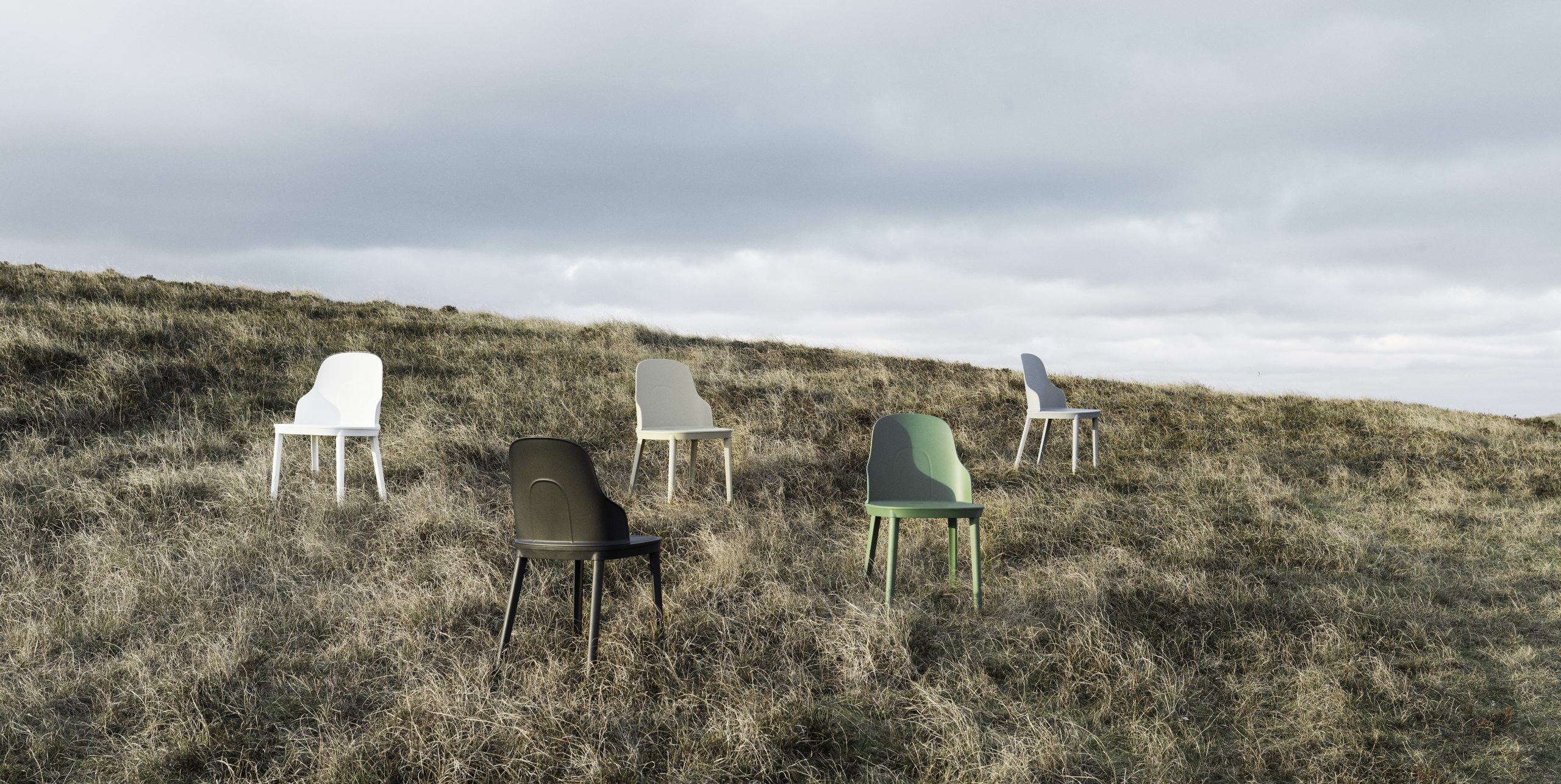Creating Sustainable Furniture with Natural Materials: An Artistic Approach

The Rise of Sustainable Furniture
As society grows increasingly aware of its environmental responsibilities, the wave of sustainable furniture has surged to the forefront of home décor and design. Today’s consumers prioritize ecological impact, leading to a burgeoning demand for pieces crafted from natural materials. This movement not only displays artistic creativity but also embodies a commitment to preserving our planet for future generations.
Creating sustainable furniture begins with carefully selected materials that emphasize the principle of sustainability. For instance, reclaimed wood, often sourced from old barns, shipping pallets, or defunct warehouses, is not only an eco-friendly option but also tells a story steeped in history. By repurposing this timber, artisans reduce waste while breathing new life into discarded materials, thereby mitigating the need for new wood and preserving forests that are essential for combating climate change.
Another ideal choice is bamboo, a remarkably versatile grass that grows incredibly quickly—some species can reach full height in just three months. Its rapid growth cycle coupled with its strength makes it a popular alternative to hardwoods, requiring minimal resources such as water and fertilizers for cultivation.
In addition to wood, hemp fabric emerges as a leading contender for upholstery. Known for its durability and resistance to mold, hemp is a natural fiber that grows with little need for pesticides or fertilizers. This textile is becoming commonplace in eco-conscious furniture design, offering a robust yet aesthetically pleasing option for consumers who desire both elegance and sustainability.
Cork is another sustainable material gaining traction. Harvested from the bark of cork oak trees without harming them, this renewable resource contributes a unique texture and aesthetic to furniture and wall coverings. Furthermore, its natural insulating properties also enhance energy efficiency within spaces.

The Artistic Side of Sustainability
Beyond the right materials, the design process plays a vital role in sustainable furniture production. Artisans often imbue their creations with handcrafted details that set them apart in a market saturated with mass-produced options. These unique features not only enhance aesthetic appeal but also provide a personal touch that often resonates with consumers looking for authenticity in their home furnishings.
The use of natural dyes for finishing contributes another layer of sustainability. These dyes are derived from plants and minerals, promoting healthier indoor air quality while minimizing the ecological toxicity associated with synthetic alternatives.
Moreover, the exploration of innovative shapes reflects a balance of functionality and artistic expression, turning ordinary pieces into statement works that can elevate any living space. For example, a coffee table crafted from reclaimed materials may feature unexpected curves and angles, making it not just practical, but also a conversation starter.
This fusion of sustainability and artistry is reshaping the furniture industry, offering exciting options that marry aesthetics with environmental consciousness. As the conversation around sustainability grows, consumers in the United States and beyond are encouraged to explore these captivating creations, diving deeper into the fascinating world of furniture designed not just for beauty, but for harmony with our planet.
DISCOVER MORE: Click here to dive deeper
Sustainable Materials: The Foundation of Artistic Furniture Design
Cultivating a sustainable approach to furniture design not only involves understanding the environmental impact of materials but also embracing an artistic vision that breathes life into these resources. The journey into creating sustainable furniture begins with a strong foundation rooted in natural materials. For artisans, the selection process is about more than just sustainability; it is an opportunity to express creativity while honoring the planet.
One of the critical considerations in this artistic journey is the lifecycle of materials. Eco-conscious designers often seek materials that have a minimal environmental footprint. This includes not just sourcing, but also the processing and transportation of materials. A key aspect is utilizing locally sourced resources to diminish transportation emissions and support community economies. The following materials are gaining traction for their sustainable properties:
- Reclaimed Wood: A versatile option that not only reduces waste but also provides unique textures and colors that can’t be duplicated. Each piece tells a story, showcasing the beauty of nature’s imperfections.
- Bamboo: This fast-growing grass often requires less energy to produce than traditional hardwoods, making it a practical choice for eco-friendly furniture. Its lightweight yet sturdy nature adds to its appeal.
- Hemp Fabric: As a textile, hemp is highly durable, antibacterial, and biodegradable. Its cultivation process demands minimal resources, making it an even more attractive option for future-forward furniture designers.
- Cork: Its harvesting process is sustainable as it allows trees to thrive while providing a unique aesthetic for furniture design. Cork is also naturally resistant to fire, mold, and pests.
The above materials, in addition to their individual sustainable properties, encourage artisans to design with innovation. They invite a variety of applications, such as creating elegant chair frames, plush sofas, or even decorative pieces that serve dual purposes. This blend of functionality and form contributes to a versatile category of furniture that appeals to a wide range of consumers.
Artisans, recognizing the importance of their social and environmental responsibilities, are not only focused on the products they create but also the methods they employ. In engaging with the crafting process, many artists are increasingly integrating techniques that promote sustainability. These may include the use of traditional joinery methods that avoid adhesives, which can emit volatile organic compounds (VOCs) into homes.
Craftsmanship and Community
The movement towards sustainable furniture also fosters a sense of community among artisans. By collaborating with local suppliers, they ensure that every piece is a testament to both regional artistry and ecological mindfulness. This collaboration can manifest in numerous ways, such as:
- Sharing resources to collectively reduce waste.
- Hosting workshops to educate the community about the importance of sustainable practices.
- Promoting local craftsmanship to elevate the visibility of artisans committed to responsible design.
As the sustainable furniture movement continues to grow, the intertwining of artistry and ecological awareness brings forth new possibilities. Consumers are increasingly drawn to pieces that carry a story, reflect personality, and align with their values. By delving into the world of sustainable furniture, individuals are not only enriching their living spaces but are also supporting a broader commitment to sustainability that resonates far beyond the furniture itself.
| Advantage | Description |
|---|---|
| Eco-friendly Materials | Utilizing renewable resources reduces waste and carbon footprint, promoting a healthier planet. |
| Unique Aesthetic | Natural materials lend a distinctive design quality, ensuring each piece stands out with its own character. |
| Durability | Natural materials, such as hardwood or bamboo, often prove to be more durable than synthetic alternatives. |
| Health Benefits | Less exposure to harmful chemicals often found in synthetic furniture promotes better indoor air quality. |
In exploring the world of sustainable furniture, it is important to recognize the role of artistry in the creation process. The approach of combining natural materials not only enriches the design but also serves as a powerful statement against mass production and environmental harm. By selecting materials such as reclaimed wood, organic linens, or sustainably sourced metals, artisans are crafting pieces that are not only visually stunning but also tell a story of ecological responsibility. Furthermore, the tactile quality of natural materials adds warmth and comfort to any space, enhancing both functionality and aesthetic appeal. The carbon footprint of furniture can be significantly reduced through this eco-conscious choice, advocating for a balance between modern living and environmental preservation. This artistic endeavor fosters a community that appreciates both craftsmanship and sustainability, inviting consumers to cherish their purchases as lasting investments in the planet’s future.
DIVE DEEPER: Click here to discover more
Innovative Techniques in Sustainable Furniture Crafting
The fusion of artistry and sustainability in furniture design represents not just a trend but a movement towards a more ethical production paradigm. As artisans embrace innovative techniques in crafting their pieces, they are redefining how we perceive both functionality and aesthetics. Among these techniques, the use of low-impact finishing methods stands out as not only environmentally considerate but also significantly enhancing the visual appeal of the final product.
Natural Finishes play a vital role in preserving the integrity of natural materials while minimizing harmful chemical emissions. Artisans are opting for oils and waxes derived from natural sources, such as linseed oil and beeswax, which not only protect the furniture but also enhance the grain and color of the wood. This approach creates a more organic look that resonates with consumers looking for authenticity in their furnishings. Additionally, these finishes are often easier to maintain and can be reapplied over time—extending the lifecycle of the furniture.
Alongside natural finishes, upcycling has garnered attention as a creative means of sustainable furniture production. By transforming discarded or underutilized materials into functional art pieces, designers are able to minimize waste while exploring new design possibilities. This practice not only requires a unique vision but also challenges artisans to think outside the box, often leading to stunning, one-of-a-kind creations that provide character and depth to any living space.
The Role of Technology in Sustainable Design
Embracing technology can also play a significant role in advancing sustainable furniture. The use of computer-aided design (CAD) software allows artisans to visualize their creations before physical production begins, optimizing material use and reducing waste. This technological integration extends to environmentally friendly manufacturing processes like CNC machining, which utilizes precision cutting tools to create intricate designs with minimal waste material. Such methods empower artisans to achieve high levels of craftsmanship while sticking to sustainable practices.
Moreover, the burgeoning interest in 3D printing technology offers new avenues for sustainable furniture production. Utilizing biodegradable filaments or recycled plastics, designers can create entirely new forms of furniture that were previously unimaginable. This shift not only enhances the efficiency of production timelines but reduces the need for extensive material sourcing, further diminishing the ecological footprint of furniture design.
To further reinforce the sustainability ethos, designing for disassembly is also gaining popularity. By creating furniture that can be easily taken apart for repair or recycling, artisans are addressing the growing concern of disposable culture in consumer goods. This thoughtful approach enables individual components to be replaced or reused, ultimately keeping furniture out of landfills and reducing waste.
Integrating these innovative techniques allows artisans to push the boundaries of conventional furniture design. They effectively marry form and function, elevating each piece into a sustainable work of art. As consumers grow more discerning about their purchases, the demand for furniture that reflects both style and conscious living will only continue to amplify, driving the artistic approach towards sustainable furniture further into the spotlight.
DIVE DEEPER: Click here to discover the therapeutic power of music</p
Conclusion: Embracing a New Era of Sustainable Furniture Design
In a world increasingly aware of environmental sustainability, the movement toward creating sustainable furniture with natural materials embodies a significant shift in consumer values and artistic expression. Combining artistry with sustainability, artisans are pioneering a new frontier in furniture design where each piece tells a story of craftsmanship, ingenuity, and environmental responsibility. As we have explored, the use of natural finishes preserves the beauty of materials while contributing to a healthier planet, while upcycling inspires creativity and encourages responsible consumption.
The integration of modern technologies, such as CNC machining and 3D printing, supports artisans in optimizing resource use and reducing waste, leading to innovative designs that are as functional as they are visually striking. The rising popularity of designing for disassembly further highlights the commitment to a sustainable ethos, challenging conventional notions of disposability in our culture.
As awareness grows regarding both environmental issues and the importance of conscious consumerism, demand for eco-friendly furniture options will undoubtedly continue to rise. This presents a unique opportunity for artists and designers to further explore the synergy between aesthetics, functionality, and ecological responsibility. By choosing sustainable furniture, consumers are not only investing in quality pieces for their homes but are also making a statement about their values and the future they envision.
With every handcrafted creation, we’re stepping closer to a harmonious balance where style and sustainability coexist. Thus, the journey of creating sustainable furniture with natural materials is not just about the final product; it is about fostering a culture that values creativity, innovation, and the health of our planet.


